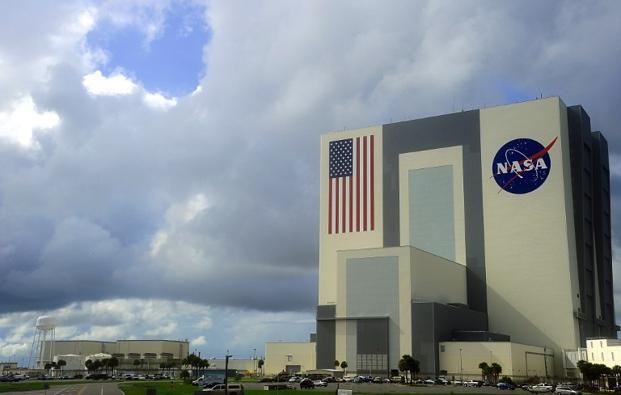March 8, 2015
The probe will stay over the Ceres for 16 months to study its structure, gather clues to understand how Earth, other planets were created

Nasa scientists also hope to capture new photos of Ceres once Dawn emerges from the planet’s dark side in April. Photo: AFP
March 8, 2015
The probe will stay over the Ceres for 16 months to study its structure, gather clues to understand how Earth, other planets were created

Nasa scientists also hope to capture new photos of Ceres once Dawn emerges from the planet’s dark side in April. Photo: AFP
Washington, DC: The US space probe Dawn began orbiting the dwarf planet Ceres on Friday on a voyage of discovery into the solar system’s main asteroid belt, where it will collect a trove of data and photos, Nasa said.
The probe — the first to orbit a dwarf planet — will stay over the mysterious body for 16 months to study its structure and gather clues to help mankind better understand how Earth and the other planets were created.
It took Dawn seven-and-a-half years and 3.1 billion miles to reach Ceres’s orbit, after leaving Earth and stopping off at the Vesta asteroid for its previous exploration mission.
Dawn was captured by the dwarf planet’s gravity at 1239 GMT, some 38,000 miles (61,000 kilometers) from Ceres’s surface.
About an hour after reaching Ceres, Dawn sent a signal to mission controllers at Nasa’s Jet Propulsion Laboratory in Pasadena, California to say it was “healthy and thrusting with its ion engine,” the space agency said.
“Ceres reached out and tenderly took Dawn into its permanent gravitational embrace, so the spacecraft is in orbit and it will spend the rest of its operational life there,” said Dawn chief engineer Marc Rayman, who is also mission director at JPL.
“We feel exhilarated,” said Dawn principal investigator Chris Russell from the University of California, Los Angeles.
“We have much to do over the next year and a half, but we are now on station with ample reserves, and a robust plan to obtain our science objectives.”
Over the next several months Dawn will spiral down toward the surface of Ceres to conduct four science orbits, collecting pictures and data on its geologic features, mineral makeup and gravity field.
By November, the probe will be as near as 230 miles to Ceres’s surface, and eventually scientists hope to build a topographic map of Ceres, also called a proto-planet.
Researchers said the mission will provide valuable data about the building blocks of the solar system — including how our own planet Earth came into being — and about the possibility of life on Ceres.
“Ceres, that proto-planet, that beginning seed of a planet, now allows us to look back in time to see how terrestrial planets are put together,” said Jim Green, director of Nasa’s Planetary Science Division.
“We know extensively about its ice shell, but we need to know more about it,” Green added, calling Ceres a “beautiful example of our dwarf planets.”
Scientists are also intrigued by two bright spots on Ceres and water vapor plumes that were spotted by European Space Agency telescopes in 2014.
“By the time we finish in mid-2016, we are going to know Ceres in exquisite detail, we’re going to understand why it has very, very bright spots,” said Dawn mission deputy principal investigator Carol Raymond.
“We’re going to understand what Ceres means in terms of planets in our solar systems.” Nasa scientists also hope to capture new photos of Ceres once Dawn emerges from the planet’s dark side in April.
The last images of Ceres show a slim, pockmarked silver crescent, with most of the dwarf planet shrouded in darkness.
Space buffs are eager for fresh images. Ceres was discovered in 1801 by Sicilian astronomer Father Giuseppe Piazzi and was classified as a planet, only to be reclassified later as an asteroid and then a dwarf planet.
It has an average diameter of 590 miles and makes a full rotation every nine hours. Though this is the first mission to orbit a dwarf planet, Dawn explored the giant Vesta asteroid in 2011 and 2012 before it set off for Ceres.
Ceres and Vesta are the two largest bodies in the asteroid belt between Mars and Jupiter. They vary in composition, with Ceres mostly rock and ice compared to the dry Vesta asteroid, and scientists said together the missions will provide valuable data to contrast.
Launched in 2007, the $473 million Dawn mission is equipped with a high-definition camera and has an ion propulsion engine that allows it to reach high speeds and also make a slow approach for an easy drop into orbit.
Courtesy: AFP















































































































